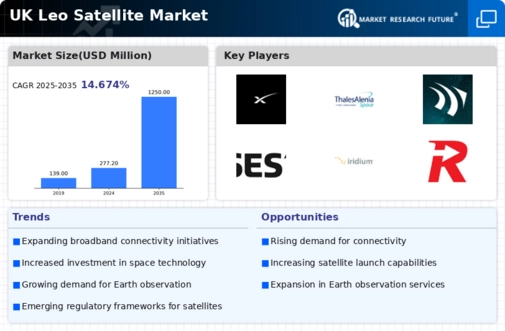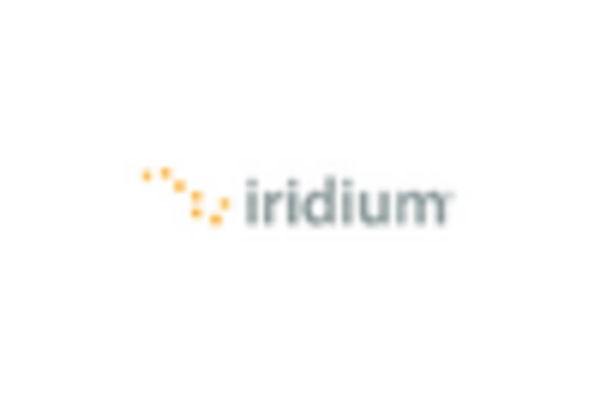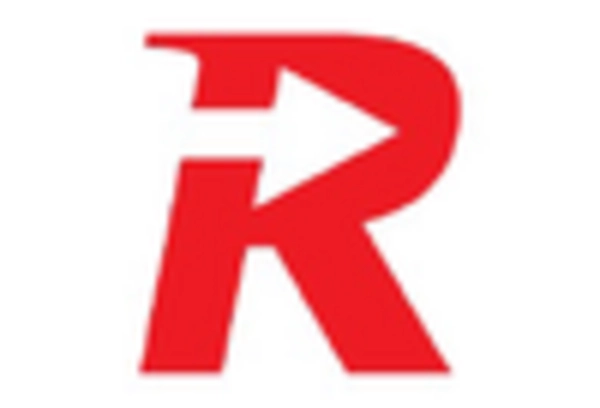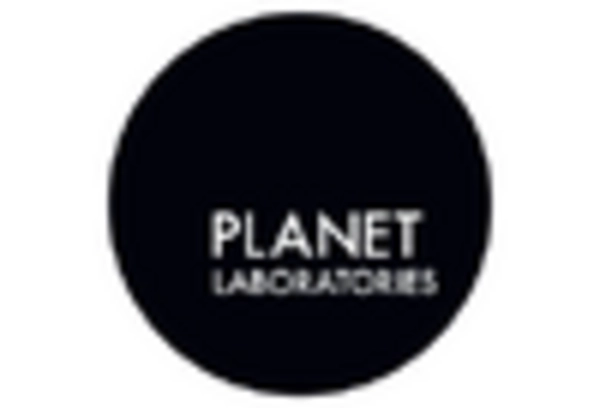The leo satellite market is currently characterized by a dynamic competitive landscape, driven by advancements in technology and increasing demand for global connectivity. Key players such as SpaceX (US), OneWeb (GB), and Amazon (US) are at the forefront, each adopting distinct strategies to enhance their market positioning. SpaceX (US) continues to leverage its innovative launch capabilities and cost-effective satellite deployment, while OneWeb (GB) focuses on expanding its broadband services to underserved regions. Amazon (US), through its Project Kuiper, aims to establish a robust satellite constellation that complements its existing cloud services, indicating a strategic alignment with its broader business objectives. Collectively, these strategies contribute to a competitive environment that emphasizes technological innovation and service diversification.
In terms of business tactics, companies are increasingly localizing manufacturing and optimizing supply chains to enhance operational efficiency. The market appears moderately fragmented, with several players vying for market share, yet the influence of major companies is substantial. This competitive structure fosters an environment where collaboration and strategic partnerships are essential for growth, as companies seek to leverage each other's strengths to navigate the complexities of the market.
In October 2025, OneWeb (GB) announced a partnership with a leading telecommunications provider to enhance its service offerings in rural areas of the UK. This strategic move is significant as it not only expands OneWeb's reach but also aligns with its mission to bridge the digital divide, thereby reinforcing its competitive edge in the market. The collaboration is expected to facilitate the deployment of high-speed internet services, which could potentially increase customer adoption rates and revenue streams.
In September 2025, SpaceX (US) successfully launched its latest batch of Starlink satellites, further solidifying its position as a leader in the leo satellite market. This launch is particularly noteworthy as it demonstrates SpaceX's commitment to rapid deployment and scalability, which are critical factors in meeting the growing demand for satellite-based internet services. The company’s ability to maintain a high launch cadence may provide it with a competitive advantage, allowing it to capture market share more effectively than its rivals.
In November 2025, Amazon (US) revealed plans to accelerate the development of its Project Kuiper satellite constellation, with an emphasis on integrating advanced AI technologies for enhanced data processing and service delivery. This initiative is indicative of a broader trend towards digitalization within the industry, as companies seek to harness AI to improve operational efficiencies and customer experiences. The integration of AI could potentially transform service offerings, making them more responsive to user needs and market demands.
As of November 2025, the competitive trends in the leo satellite market are increasingly defined by digitalization, sustainability, and the integration of advanced technologies. Strategic alliances are becoming more prevalent, as companies recognize the value of collaboration in navigating the complexities of the market. Looking ahead, competitive differentiation is likely to evolve, shifting from traditional price-based competition to a focus on innovation, technological advancements, and supply chain reliability. This transition may ultimately reshape the landscape, fostering a more resilient and adaptive market environment.

















Leave a Comment